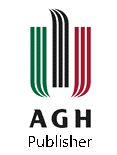Editorial Rules
Article submission
1. Authors are kindly requested to submit papers in the formats .doc, and .docx through the Editorial System (see: Make Submission). In order to submit an article, the author must register on the Contributions to Humanities website.
2. Only papers which are original and previously unpublished can be accepted for publishing. There are no fees for publishing in the Journal.
3. If the article is related to the research funded by a grant from an institution or association, the author is obliged to provide this information in a footnote, along with the grant number.
4. The texts should be submitted in continuous mode.
5. The decision to accept the text for publishing is based on an internal assessment of the editorial office and the opinion of two external reviewers (see: Review Process). The Editor-in-Chief of Contributions to Humanities decides about the publication or rejection of the text. The editors reserve the right to reject the text at any stage of editorial work.
Article structure
1. The title of the article should be concise, not too long; please, remember to consider its attractiveness for the reader.
2. Summary, or abstract, should consist of 15 lines, which render the essence of the concept covered in the article and conclusions.
3. There should be between 5 to 7 keywords.
4. The length of the text should not exceed 18 pages in Times New Roman font, size 12, with 1.5 line spacing and double-sided alignment.
5. Bibliographical footnotes should be placed in parentheses within the main text:
(Beck and Grande 2009, pp. 55–58). The lower footnotes are also possible if the author has some remarks or additional comments.
6. Short quotations (up to 2 lines) remain in the main text, separated from it by quotation marks, and the longer ones (over 2 lines) should form a separate paragraph, with the indent from the left. Foreign quotations must be translated into the language in which the article is written.
Part of the text which was omitted in the quotation should be indicated by an ellipsis surrounded by square brackets: [...] and quotes in quotes as follows: “Quote «inside» quote”. The meanings of the discussed words should be written using definitional quotes ‘definition’.
7. The references should be placed at the end of the text. An example of references is presented below:
- Beniger, J.R. (1987). Personalization of mass media and the growth of pseudo-community. Communication Research, 14, 352–371.
– Fox, S., Raine, L., Horrigan, J., Lenhart, J., Spooner, T., Carter, C. (2000). Trust and privacy online: Why Americans want to rewrite the rules. The Pew Internet & American Life Project.
– Sundar, S.S. (2007). Social psychology of interactivity in human-Website interaction. In: A.N. Joinson, K.Y.A. McKenna, T. Postmes, U.-D. Reips (Eds.), The Oxford Handbook of Internet Psychology (pp. 89–104). Oxford, UK: Oxford University Press.
– Turkle, S. (1995). Life on the screen: Identity in the age of the Internet. New York: Simon & Schuster.
– Wolfinbarger, M., Gilly, M. (2000). Consumer’s perceived quality of e-commerce experiences. Retrieved from: California University Long Beach, http://www.crito.uci.edu//papers/2000/consumers-gilly.pdf [1.09.2009].
8. The illustrative material should be saved in formats: TIF, JPG, or EPS. Color photographs should have a minimum resolution of 300 dpi, black and white photographs should have a resolution of 600 dpi, and black and white drawings (line drawings) should have a resolution of 1200 dpi. Each illustrative material should be properly numbered and signed.
9. Included in the work, all text fragments, illustrations, figures, tables, etc. derived from other works are protected as someone else's work by copyright. Therefore, it is required to clearly indicate the source not only in the list of literature, but also in the caption of the figure, photograph, and table, and to have the permission of the copyright owner of the reprinted passage for its use. These requirements apply to both derivations from Polish and foreign works. Obtaining permission is the responsibility of the author. Lack of such permission and failure to provide the source is a violation of copyright and entails all legal consequences. The inclusion in the book of copyrighted materials taken from other publications is possible on condition that the Author first provides the Publisher with the written permission of the copyright owner to use the aforementioned materials in the Author's work.
Additional information for authors
The quality of the text is determined not only by its content but also by its form. Therefore, please give it a specific structure (subchapters), make references to the literature on the subject, present the methodology, and finish the article with a clear conclusion.
The review form is published on the SHAGH website, so the author can familiarize themselves with the evaluation criteria of the submitted texts (see: Review form).


